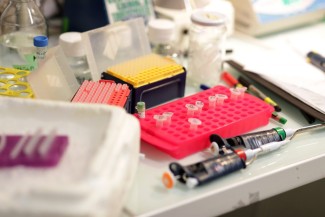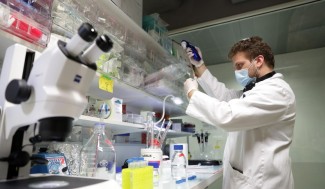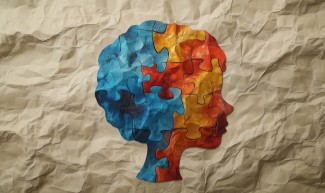Basic research is one of the three building blocks, along with applied research and experimental development, which makes up research and development (R&D).
The Frascati Manual, the international methodological reference for statistical studies of research and development activities, defines basic research as:
Basic research is experimental or theoretical research undertaken to gain new knowledge about the basis of observable phenomena and facts, without considering any particular application or use.
Based on the state of the art, i.e. the body of knowledge made available on a specific field, basic research is initiated by formulating questions or hypotheses (theories) to be answered by experience and observation.
This is followed by a cycle called the "scientific method" which alternates the phases of theory, prediction, experiment and observation, leading to a scientific discovery on which a new theory (and thus new cycles) can eventually be based.
At the end of all or part of this iterative system, scientists must be able to bring new knowledge to the field invested, thus redefining a new state of art enriched, without worrying, however, at their level of knowledge, whether there will be a practical application to this research.
Shared knowledge
The new state of the art defined in a research cycle is usually published in specialized scientific journals that researchers around the world can consult to further their own research. In this way, knowledge is shared and mutualized to increase the state of knowledge.
There are several types of basic research with sometimes blurred boundaries:
- Descriptive research: this type of research consists of describing a phenomenon as precisely as possible without focusing specifically on its mechanisms;
- Explanatory research: generally answers the questions "why" and "how" and is concerned with the explanation of known and observable phenomena;
- Exploratory research: exploratory research focuses on unknown or little-known phenomena.
By definition, basic research has no economic perspective.
Basic research, applied research and clinical research are often contrasted, but the boundaries between the different types of research are increasingly porous, as the two are interdependent and enriching.
Basic Research at Paris Brain Institute
Research at Paris Brain Institute was conceived with the idea of abolishing as much as possible the theoretical, material and financial barriers between basic research, applied research, clinical research, etc. That is why Paris Brain Institute brings together in one place researchers, clinicians, patients, start-ups… to promote interactions as much as possible, to create emulation and to accelerate applications to the bedside.
For example, a basic research postulate may be clinically validated or invalidated, and a clinical observation may initiate a basic research project, mobilize several research teams, and form the basis for the development of a technological solution.

There are plenty of examples of this decompartmentalization at Paris Brain Institute.
For example, in 2022, scientists from Paris Brain Institute et de l’Inserm carried out research that made it possible to map the 3-dimensional meningeal lymphatic network, a network involved in the disposal of waste produced by the brain and spinal cord. This basic research discovery opens the door to better clinical management of certain neurological diseases.
MRI mapping during this research showed that the meningeal lymphatic network was significantly larger in men than in women. This observation could explain the greater predisposition of women to develop diseases for which this network is involved, such as Alzheimer’s disease, multiple sclerosis, stroke or even meningeal tumours. It is on the basis of this premise that research is currently being carried out at Paris Brain Institute with the aim of improving the quality of life of patients.







